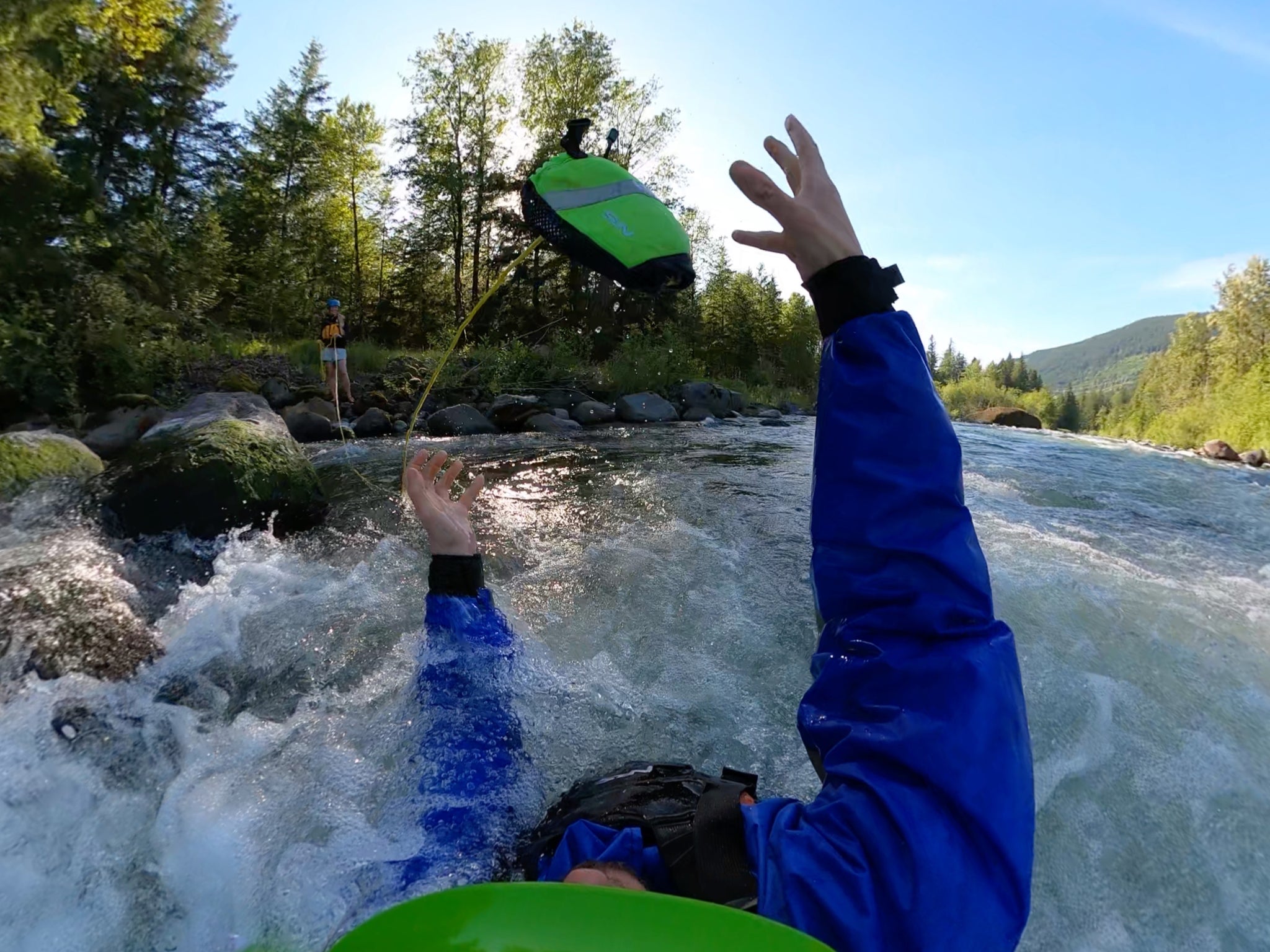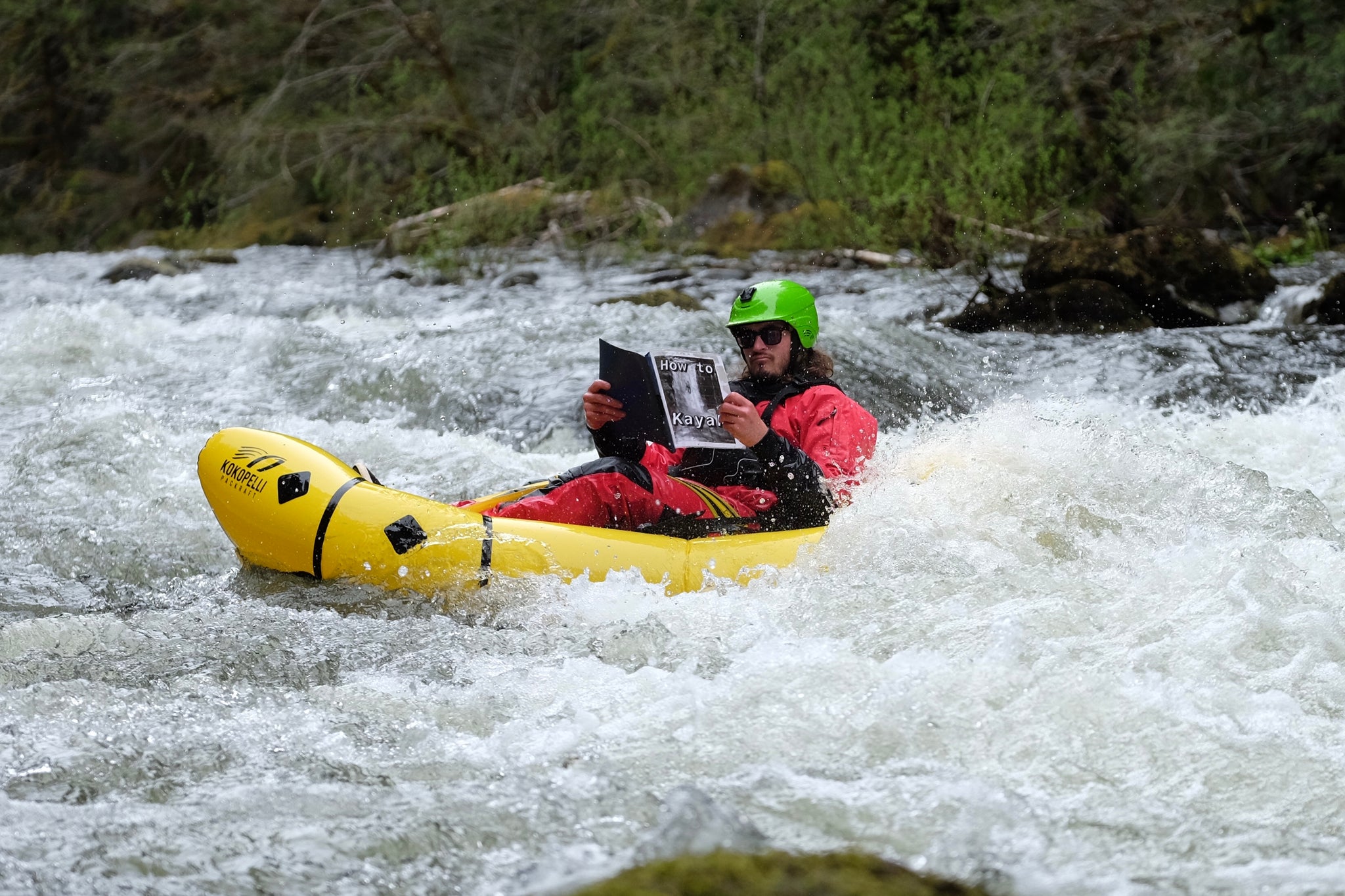Flat Water to Whitewater Packrafting: What I Learned Along the Way
When I first started paddling I had a recreation plastic sit on top kayak. I paddled it in lakes, the ocean, and some easy rivers. I followed the coast guard rules of having a pfd on board, but never wore it. It’s crazy to look back seeing myself running class II/III rapids in a sit on top with no pfd, no throw rope, no rescue skills and I thought that was totally fine at the time.

Simply put...I got lucky.
I usually live my life by the slogan “Safety Third.” However after multiple ER visits, ambulance rides, and too many surgeries to count, I’m starting to bump safety up. I read somewhere that when you first start any activity you have two jars, the first jar is luck and it’s full of marbles, the second is the experience jar and it’s empty. After every mishap, you take one marble from your luck jar and put it in your experience jar. Eventually you’re going to run out of luck, but by that time you should have enough experience to carry you through.
I wish someone would have given me a few tips to steer me in the right direction. That’s what this blog is for, to give you some tips and resources so you can get after it safety and hopefully gain some experience marbles while keeping your luck jar full.
Top 5 things I wish I had known going from flat water to whitewater:
1. Paddle With Someone Who is Experienced

I wish I’d had someone to take me down some rivers and teach me a few things. With someone experienced, you can progress a lot faster. I’m super shy and like doing things alone, so I know this can be tough for people. But it’s huge if you can get some experience from others. You don’t need a full on mentor, but someone who can show you the ropes.
There are tons of groups on Facebook and local kayak clubs full of people looking to paddle with others. Just make sure you use your best judgement and don’t get stuck with some crazy person who wants to take you down a class IV your first day. Before you head down any river make sure you are comfortable paddling in every direction on flat water and be comfortable getting in and out of your boat in the water.
Another fun way to learn is go on a guided water rafting trip and chat with guides. Try to read the river and see if they take the same line down the rapid that you chose in your head.
2. Take a Swift Water Rescue Class

After a taste of mellow whitewater, you can decide if it’s something you like and want to pursue. The next step is to take a swift water rescue class. You’ll learn all about throw ropes, self rescue, and rescuing your friends. I know it’s expensive, but the skills you’ll learn are worth it. Bonus, you’ll learn all the cool lingo too, like eddy, boil, strainer, and CFS. After your class, make sure to practice those skills often so they are fresh for when you need them.
Swiftwater Safety Institute is great and they offer packraft specific courses.
There are also tons of intro to whitewater paddling classes where you can learn the right technique before you develop bad habits. Clackamas River Outfitters in Oregon offers courses and trips for beginner to expert paddlers.
3. Prioritize Proper Paddling Gear and Safety Equipment

Sure you can get away with wearing a raincoat as a splash jacket or using a bike helmet instead of a whitewater one. While those options are better than nothing, you should try and buy the right gear. If you’re paddling in the winter, a drysuit and gloves are mandatory. If you’re in whitewater, you should have a whitewater PFD and not a wakeboarding vest you borrowed from your friend. Even a cheaper whitewater specific paddle can be the difference between getting stuck in a hole or having enough leverage and power to get out. Local paddle shops rent gear so you can rent a drysuit for a day or test out a few paddles to figure out the length and feather angle you want.
Also try not to bring a lot of stuff with you. All of it can be a hazard if you flip. If you do bring gear, store it in a deck pack or in TiZip compartment of your packraft.
Lastly, use the right packraft for the right situation. The ultralight lake packrafts can hang in some rapids, but if you’re in whitewater, use a whitewater specific raft. More and more shops are renting packrafts so you can try them out and see if you like a spraydeck or a self-bailing model before you buy.
4. Check Out Online Resources and Guidebooks

Americanwhitewater.com is hands down the best resource for paddling. Download the app. It will show you nearby rivers, ratings, and flow levels. It’s great for road trips to find a perfect run nearby and the class you feel comfortable with. It also has flow level charts so you can see the history of the river and know when the prime months are. After checking local flows, go through the comments looking for wood/strainer updates.
Guidebooks are also really useful. Like hiking books with trails or rock climbing books with topos, whitewater guidebooks have all the info on rivers and are way more detailed than websites. Usually they tell you every rapid on the run, what the runnable lines are, and things to watch out for. A really good how to paddle book I always recommend is “Kayak-The New Frontier” by William Nealy. It is filled with diagrams about paddle techniques and river features. The Packraft Handbook by Luc Mel is another great resource for all things packrafting. For Multiday Trips River Maps makes great waterproof books showing rapids and campsites
5. Stay and Play

When I first ran rapids, I’d just paddle my way straight through them. But now if something is fun, I’ll catch an eddy, paddle back up, and try to surf a hole. Or practice hopping eddies and peeling in and out of the current. Or I’ll hike back up and try to run the rapid slightly differently. This is best at a whitewater park where the rapids are consistent with easy access. You can practice eddy hopping, surfing, and work your way up from small to large rapids. A lot of major cities have whitewater parks so there’s probably one near you. But just because it says park, don’t let your guard down. The risks are still there. Don’t hesitate to have a crew run safety on rapid for you.
In the end, the best paddler on the river is the one having the most fun. Whether you paddled your first class II rapid or portaged a class IV because you weren’t ready that day, you can learn from both situations. Have fun, stay safe, know your limits and push them!
Packrafts are super stable boats making them great for people to get introduced to whitewater. Unlike a normal whitewater hard shell kayak, you do not need to learn how to roll. This lowers the barriers of entry making it faster for you to get out and start paddling rapids and learning to read rivers.
Also, if you were wondering this whole time if safety is third, then what are first and second? Well...have fun and look good, respectively.
